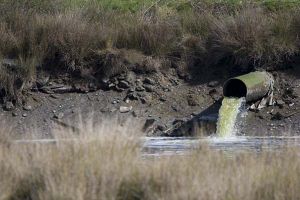What it is
Wastewater treatment effluent or discharge is the final product from a wastewater treatment plant. Because of the Federal Clean Water Act, the requirements for the cleanliness of the water is set on a plant by plant basis determined by the National Pollutant Discharge Elimination System (NPDES).

Where it goes
Most effluent is dumped into rivers and large bodies of water or used in place of drinking water for irrigation and industrial use. It has also been used to indirectly boost drinking water supplies by spraying or injecting the discharge into the ground above an aquifer and letting it seep down. Using the effluent directly from the plant for drinking water has been done in the United States once, and it was on a very small scale, but it is gaining popularity as more studies are being done. One concern with this is that there are chemicals from pharmaceutical drugs, and hormones that get past the wastewater treatment, not only have these been an issue when they are dumped into a body of water but these would be getting into the drinking water in higher concentrations. There are technologies available that can remove these chemicals but they have so far proven unpractical for widespread use.
Regulations
The limitations placed on the effluent of wastewater treatment plants by the Federal Clean Water Act are based on a Best Available Technology system which is run by the National Pollutant Discharge Elimination System (NPDES).